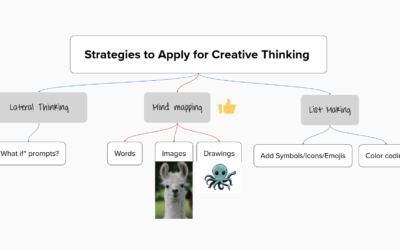 All this great content marketing talk is wonderful, but just who is going to do all this great content creation? Despite the great work happening to encourage supporters to look past “management and general” costs to real impacts, nonprofits remain concerned about raising and spending money for communications efforts. These tools augment the program work of most nonprofits, but nevertheless, the reality remains that many charities don’t have the staffing they need for a comprehensive plan to write, publish and re-share all the important information that impacts their mission. Wringing of hands hasn’t solved the problem as of yet, so just what is a nonprofit supposed to do?
All this great content marketing talk is wonderful, but just who is going to do all this great content creation? Despite the great work happening to encourage supporters to look past “management and general” costs to real impacts, nonprofits remain concerned about raising and spending money for communications efforts. These tools augment the program work of most nonprofits, but nevertheless, the reality remains that many charities don’t have the staffing they need for a comprehensive plan to write, publish and re-share all the important information that impacts their mission. Wringing of hands hasn’t solved the problem as of yet, so just what is a nonprofit supposed to do?
Look to the past to take us the future.
The nonprofit movement in the United States was created by volunteers. While volunteers remain a critical component of many nonprofits, the professional ranks have grown from less than 1% of all paid workers in the early 20th century to closer to 10% of American workers today. Much of the advances in communications have come from paid staff. That doesn’t mean it is the only way to improve content creation for a stronger mission impact and better service in our communities. The power of the crowds (let alone their wisdom) is increasingly available to the charity which asks for help. The biggest barriers are no longer the amount of time it would take to communicate with a volunteer content producer – it’s now whether a nonprofit is willing to partner with volunteers and give up a little control.
There are legitimate concerns about any nonprofit using volunteers. Who will manage their training? What liability might the charity have for the volunteer? A sound volunteer management program can address any of those issues, and if done well, will return far more to the nonprofit than the time and energy invested. In the case of crowdsourcing content, one of the benefits is being able to access much more expertise than any nonprofit could pay for in a staff capacity. There are passionate, skilled researchers, writers, and readers who can help your nonprofit create very specific, searchable content which will bring donors, clients and still more volunteers to aid in the cause.
Crowdsourcing content doesn’t mean a staff member creates a calendar and assigns blog post topics to the masses, although some of that may be possible. Better still is the idea of connecting to those supporters with expertise in a niche and ask them to create content (including video, podcasts, or other types) about what they know is important. People who become regulars – such as those who monitor the legislature, or academics with a specialty – could be assigned direct author roles in content management systems such as WordPress or Drupal. That cuts down on the effort of editing, but still ensures a reviewer checks the work for voice and accuracy before publication.
Once the words are published, a good social promotion from both the author and the charity can increase readership over what could be done with the organization alone. The ultimate goal isn’t just readers, but getting people to act. This new, niche and expert content needs to be directing people to an action, like becoming a client or a financial supporter. Your crowdsourced content is then really doing its job.




